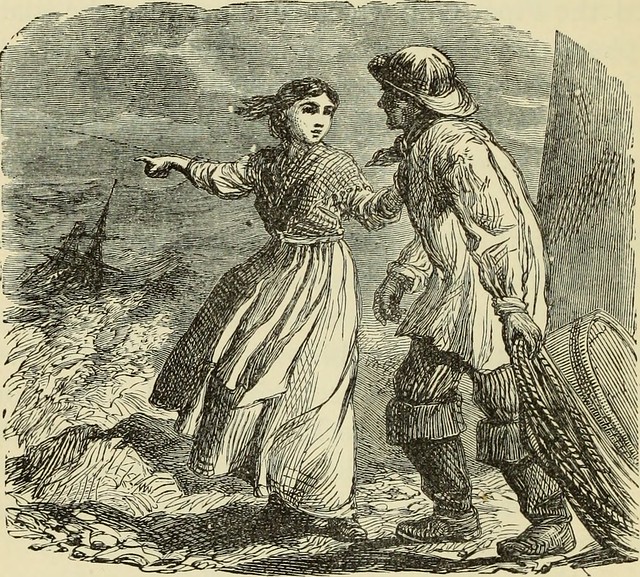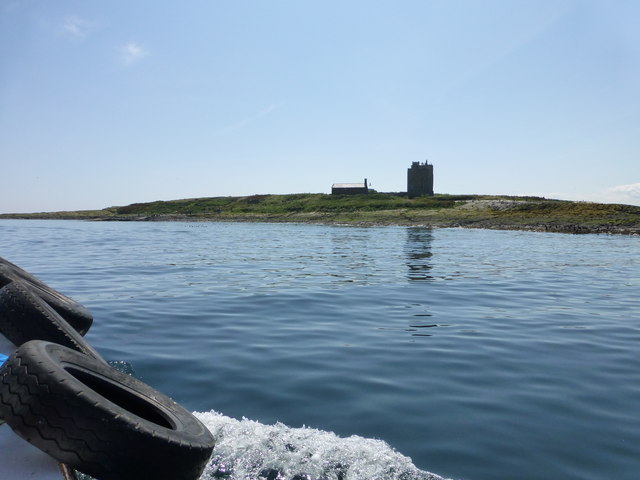Topics > Northumberland > Farne Islands > Farne Islands, 1855
Farne Islands, 1855
Extract from: History, Topography, and Directory of Northumberland...Whellan, William, & Co, 1855.
THE FARNE ISLANDS are two groups of islets and rocks, which do not belong to any hundred or division of the county, as they lie from three to ten miles out at sea. Pennant tells us that in his time, they were rented for £16 per annum, the produce being kelp, sea fowls, sea fowl eggs, feathers, etc. "Some of them," he adds, "yield a little grass, and serve to feed a cow or two, which the people are desperate enough to transport over in their little boats. The last isle I visited was the House Island, the sequestered spot where St. Cuthbert passed the last two years of his life. Here was afterwards established a priory of Benedictines for six or eight monks, subordinate to the priory of Durham. A square tower, the remains of a church, and some other buildings, are to be seen there still, and the stone coffin of St. Cuthbert. At the north end of the isle is a deep chasm from top to bottom of the rock, communicating with the sea, through which, in tempestuous weather, the water is forced with vast violence and noise, and forms a fine jet d'eau of sixty feet high. It is called by the inhabitants of the opposite coast, the Churn.” There are now three lighthouses on these islands. The passage between House Island and Staple Island, is open for vessels of any burden; but is dangerous from a cluster of rocks, called the Oxscar rocks, that lie in the middle of it, on which account the passage is called Scar-road. There is generally from five to eight fathoms of water in this road, and in Budle Bay, from three to seven fathoms on a bed of fine sand. The Pinnacles, an island in the farthest group, is so called from the vast columnar rocks at its southern extremity, over which the fowlers pass by means {)f narrow boards laid across their tops. Amongst the variety of birds which breed on these islands, we find cormorants, eider-ducks, puffins, hawks, guillemots, shags, gulls of every description, kittiwakes, great terns, sea pies, rock larks, rock pigeons, and jack-daws.
On the 5th September, 1838, the "Forfarshire" steamer from Hull to Dundee, with fifty-six persons on board, was wrecked, in attempting to pass, in a disabled condition, and during a heavy gale, between the Farne Islands: thirty-eight persons perished; eighteen were saved; nine of them by the courageous conduct of William Darling, and his daughter, Grace Horsley Darling, who occupied the Outer Farne Light House. The father and daughter ventured forth in a coble, in a tremendous sea, at the imminent risk of their lives. "By a daring effort, the former was landed on the rock on which the vessel was wrecked, and the frail cable, to preserve it from being dashed to pieces, was rapidly rowed back among the wild abyss of waters, by the skill and dexterity of this young woman alone, and there kept afloat, preparatory to the rescue of those in peril." The whole of the survivors were taken from the wreck and conveyed to the light house, where they were taken care of by those who had saved them from a watery grave. The heroic conduct of Grace Darling and her father, excited universal admiration. All ranks up even to her majesty Queen Victoria united in doing this simple maiden honour; gifts of value were conferred upon her, and presentations of monies and medals flowed from all quarters. The Long Stone Island with its light house and occupants, have remained a favourite resort for the sight-seer, and the memory of the heroic act will long remain. Grace Darling expired from the effects of consumption, on October 20th, 1842, aged twenty six years. A monument to her memory, by Davis, of Newcastle, has been erected in the chapel of St. Cuthbert, on the Farne Island. These islands are extra-parochial, and in 1851, contained a population of twenty souls.

Co-Curate Page
Grace Darling (1815 - 1842)
- Overview Further Information Timeline Grace Horsley Darling was born in Bambrugh in 1815. Grace was a lighthouse keeper's daughter and spent much of her life living on the Farne Islands; …












